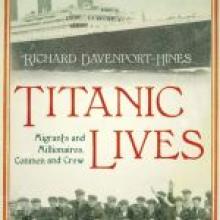
Otherwise, I'm just another sardine in the can.
There's nothing economy-class about Davenport-Hines' new book, a richly tapestried and impeccably researched account of events that led up to the sinking of the "unsinkable" ship, and the life and times of the rich Americans who largely financed the ship-building boom of the early 1900s, and the crews that sailed for them.
It's the small print of the title that defines the content of Titanic Lives, with the actual sinking and aftermath confined to the last two of 14 chapters. Hence there is lots that is new as far as this reader is concerned, as the author dissects the great age of steam, when rival shipping companies hurried to meet the ever-growing demand for transport between North America and Europe.
The most difficult requirement appears to have been meeting the accommodation needs of wealthy Americans wanting fast, floating hotel-style travel to and from Europe, while in the east-west direction, demand was for cheap, one-way passages from Europe's poor and dispossessed, desperate to start a new life.
With quotes gathered from a wide range of sources, the author also sets the record straight as far as the likelihood of a romance between a young man travelling steerage class and a young woman in first class, a la James Cameron's movie.
Indeed, the divide between the rich and the rest, the officers and the others, is the axis on which Davenport-Hines builds his story.
- Ian Williams is a Dunedin writer and composer.












